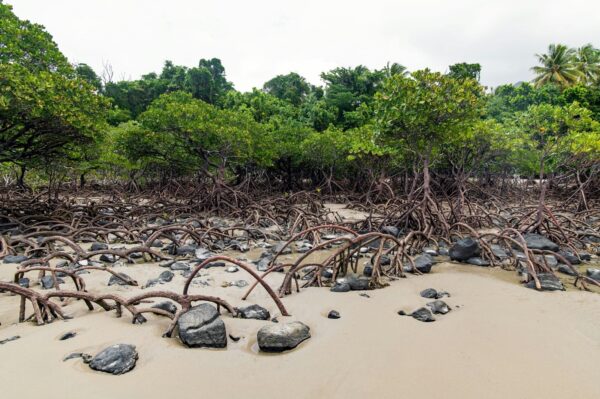On the eve of COP28 analysis shows a growing inclusion of coastal and marine ecosystems in climate strategies.
Ocean & Climate Platform, alongside its partners Conservation International, IUCN, Rare, The Nature Conservancy, Wetlands International and WWF, unveil the final version of its report on Coastal and marine ecosystems as Nature-based Solutions (NbS) in new or updated Nationally Determined Contributions (NDCs).
The analysis shows that coastal and marine Nature-based Solutions (NbS) are increasingly being integrated into national climate strategies: another sign of the growing recognition of the ocean and its ecosystems as a source of solution to address climate change.
(photo: David Clode)
How can coastal and marine NbS contribute to mitigate and adapt to climate change?
From the scientific to the political spheres, healthy coastal and marine ecosystems are increasingly identified as effective ocean-based climate solutions to contribute to achieving emission reduction plans and building resilience in line with the Paris Agreement. Last year, the COP27 final decision emphasised “the importance of protecting, conserving and restoring nature and ecosystems to achieve the Paris Agreement temperature goal, including through […] marine ecosystems”.
The same decision further encouraged “Parties to consider […] ocean-based action in their national climate goals, including but not limited to nationally determined contributions” – notably coastal and marine NbS, which can leverage the mitigation and adaptation potential of coastal and marine ecosystems while providing significant socio-economic benefits to the coastal communities. For instance, services provided by mangrove habitats to human livelihoods are estimated to be worth at least $USD 1.6 billion annually.
Key findings highlight the increasing recognition of the great potential of coastal and marine NbS in addressing climate change impacts: out of the 148 NDCs submitted as of 1 October 2023, more than two third (i.e 97) have included coastal and marine NbS. Among these:
- Almost half of NDC submissions (i.e. 62) incorporated coastal and marine NbS for mitigation purposes. For example, Belize plans to protect and restore mangrove and seagrass ecosystems to enhance their carbon sequestration capacity, while Liberia has committed to fully integrating mangrove greenhouse gas emissions and absorption into the national greenhouse gas inventory by 2030.
- About two-thirds of NDC submissions (i.e. 96 in total) included coastal and marine NbS for adaptation purposes. For instance, Cabo Verde plans to expand its marine protected areas and implement monitoring mechanisms to prevent the alteration and destruction of marine habitats within its territory. Similarly, the Maldives has committed to diversifying its fishery sector and strengthening insurance schemes to enhance the resilience of small-scale fisheries.
The analysis also illustrates a growing acknowledgment of the co-benefits of coastal and marine NbS, encompassing both climate, biodiversity and socioeconomic advantages, and a stronger commitment from states to facilitate their implementation through the establishment of supportive conditions for action, including research, technology transfer, capacity-building, and financial mobilisation. More figures, including a comparison with first NDCs, can be found in the report.
The press release can be read here and the full report ‘Coastal and marine ecosystems as Nature-based Solutions in new or updated Nationally Determined Contributions’ can be found here.
